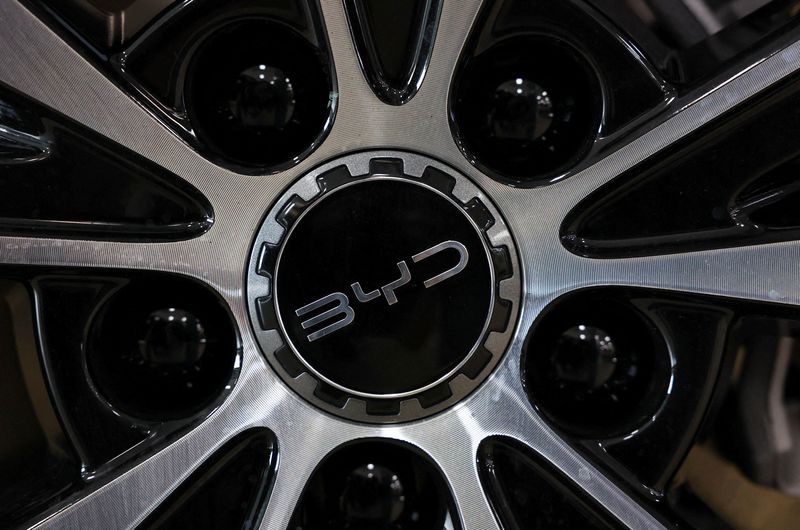Apple has officially unveiled the next generation of its 14-inch MacBook Pro, now powered by the all-new M5 chip. While the exterior design of the laptop remains familiar, the internals mark a significant leap, especially in the realm of artificial intelligence. With faster performance, better graphics, and deeper integration of on-device AI capabilities, this upgrade sets the stage for what Apple calls “the next big leap in AI for the Mac.”
M5 Chip: The Heart of the Revolution
At the core of this new MacBook Pro lies the M5 chip, Apple’s most advanced piece of silicon yet. It is built on a cutting-edge architecture that emphasizes speed, energy efficiency, and AI acceleration. Compared to its predecessor, the M4, the M5 delivers faster CPU performance, enhanced graphics processing, and—most notably—supercharged AI capabilities, thanks to a newly enhanced Neural Engine.
The M5 chip enables the MacBook Pro to run large language models, generate images, transcribe audio, and perform other complex AI tasks—all locally and in real time. Apple is leaning heavily into AI-powered computing, and the M5 is its boldest step in that direction.
AI On the Mac: More Than a Buzzword
Artificial intelligence is no longer just a cloud-based tool—it’s moving directly onto Apple’s hardware. With the M5’s Neural Engine, the MacBook Pro is capable of handling billions of operations per second dedicated solely to machine learning tasks. This includes features like advanced image editing, real-time transcription, and predictive text generation, all of which can now run natively without needing to connect to the internet.
This new level of AI performance isn’t just for Apple’s own apps. Developers can tap into these on-device capabilities using new APIs, enabling third-party applications to harness the power of the M5’s AI engine.
The result is a more responsive, private, and efficient computing experience that doesn’t rely on server-side processing. Whether you’re using voice dictation, working with massive datasets, or generating music with AI tools, the MacBook Pro is now better equipped than ever before.
Performance and Graphics Upgrades
The M5 chip doesn’t just bring AI improvements—it also delivers substantial gains in raw performance. The CPU offers faster performance across single- and multi-core tasks, while the GPU architecture has been optimized for smoother graphics rendering, improved gaming performance, and accelerated workflows in creative applications like Final Cut Pro and Logic Pro.
Unified memory bandwidth has been increased, enabling faster access to large files and smoother multitasking. The new MacBook Pro can now be configured with up to 64GB of memory, making it ideal for memory-intensive tasks like 3D rendering, large-scale coding projects, or professional video editing.
Apple also introduced a faster SSD configuration, which significantly reduces file transfer times and project loading speeds. Users working with 4K or 8K footage will see marked improvements in how quickly the system handles large media files.

Familiar Design, Bigger Battery Life
Despite all the internal upgrades, Apple has retained the same sleek and minimal design that has become a hallmark of the MacBook Pro. The 14-inch Liquid Retina XDR display returns, offering stunning color accuracy, high brightness, and deep contrast ratios—perfect for photographers, videographers, and designers.
The port layout remains unchanged, with three Thunderbolt ports, an HDMI port, a headphone jack, and a full-sized SD card reader. MagSafe charging is also back, providing a safe and easy way to power the laptop.
What’s new, however, is the improved battery life. Apple claims the M5 chip’s efficiency allows the new MacBook Pro to last up to 24 hours on a single charge under light-to-moderate workloads. Even during intensive tasks like video rendering or code compiling, battery performance has seen meaningful gains.
macOS Tahoe: The Software Side of AI
The MacBook Pro will ship with macOS Tahoe, the latest version of Apple’s desktop operating system. macOS Tahoe introduces deeper integration with Apple Intelligence, the company’s suite of AI-powered features.
From a smarter Spotlight search that understands context, to enhanced system-wide summarization, and better proactive suggestions, macOS Tahoe takes full advantage of the M5 chip’s on-device AI capabilities. These new tools are designed to anticipate what users need before they ask, making the overall Mac experience faster and more intuitive.
Aimed at Professionals and Creators
Apple has clearly designed the new MacBook Pro with professionals in mind. It’s an ideal machine for developers working with machine learning models, video editors using AI-assisted tools, and designers who rely on lightning-fast rendering.
At the same time, Apple has made it accessible enough for students, business professionals, and general users who want top-tier performance in a portable package. For anyone upgrading from an Intel-based Mac or even an early M1 model, the performance difference will be noticeable and substantial.

Pricing and Availability
The new 14-inch MacBook Pro with M5 is available for pre-order starting today and will arrive in stores and with customers beginning next week. Pricing starts at $1,599 for the base model, which includes 16GB of unified memory and 512GB of SSD storage. Higher configurations—with expanded storage and memory—are available at additional cost.
Available in Space Black and Silver, the MacBook Pro continues Apple’s tradition of premium design and professional-grade performance in a compact form factor.
Looking Ahead
With the launch of the M5 chip and its AI-focused features, Apple is clearly signaling where it believes the future of computing lies: powerful, intelligent, and entirely on-device. While this 14-inch model marks the first Mac to debut with M5, more variants—likely with “Pro” and “Max” versions of the chip—are expected in the coming months for those needing even more horsepower.
For now, this new MacBook Pro is more than just a spec bump. It’s a strategic step into a new era of computing where hardware and AI work hand in hand—efficiently, privately, and powerfully.











